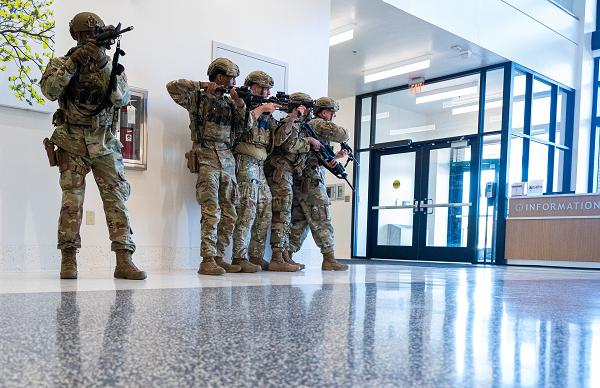
Joint Base Langley-Eustis, Virginia. (April 17, 2025): Active Shooter! In this photo by Senior Airman Mikaela Smith, Airmen from the 633rd Security Forces Squadron clear the lower level of a hospital during an active shooter training exercise. Unfortunately, active shooters have become all too common in American society. For the military, the prospect of active shooters on base is all too real.
Since 1993, US military installations have had more than twenty mass shootings. The most recent, and most deadly, was November 5, 2009, at Fort Hood, Texas. Major Nidal Malik Hasan, an Army psychiatrist, opened fire inside the base’s processing center, killing thirteen people and an unborn child, and wounding thirty-two others. Hasan was later sentenced to death and is currently on military death row at Fort Leavenworth in Kansas.
The military defines an “active shooter” as “an individual actively engaged in killing or attempting to kill people in a confined and populated area with no regard for their own safety or capture.” In many cases, there is no pattern or method to the selection of victims by an active shooter. Common motives include anger, revenge, ideology, and untreated mental illness. They are often on the move looking for random victims of opportunity until stopped by law enforcement, suicide, or other intervention. For these reasons, active shooter situations are unpredictable and evolve quickly.
To confront these threats, Air Force security personnel train in small teams to isolate and eliminate these killers. These teams begin by establishing a perimeter to control the scene and then evacuate innocent civilians in an orderly fashion. Often, a gunman will try to blend in with civilians fleeing the scene so security must identify friend from foe. These special squads DO NOT, however, attempt to treat the wounded at the scene but are instead trained to locate the shooter first. Follow on teams of medical professionals would then provide initial emergency medical care for critically wounded individuals and get them quickly to safety.
While it is an unfortunate fact of modern life that these attacks happen, the military is training to effectively confront active shooter situations to preserve lives.


